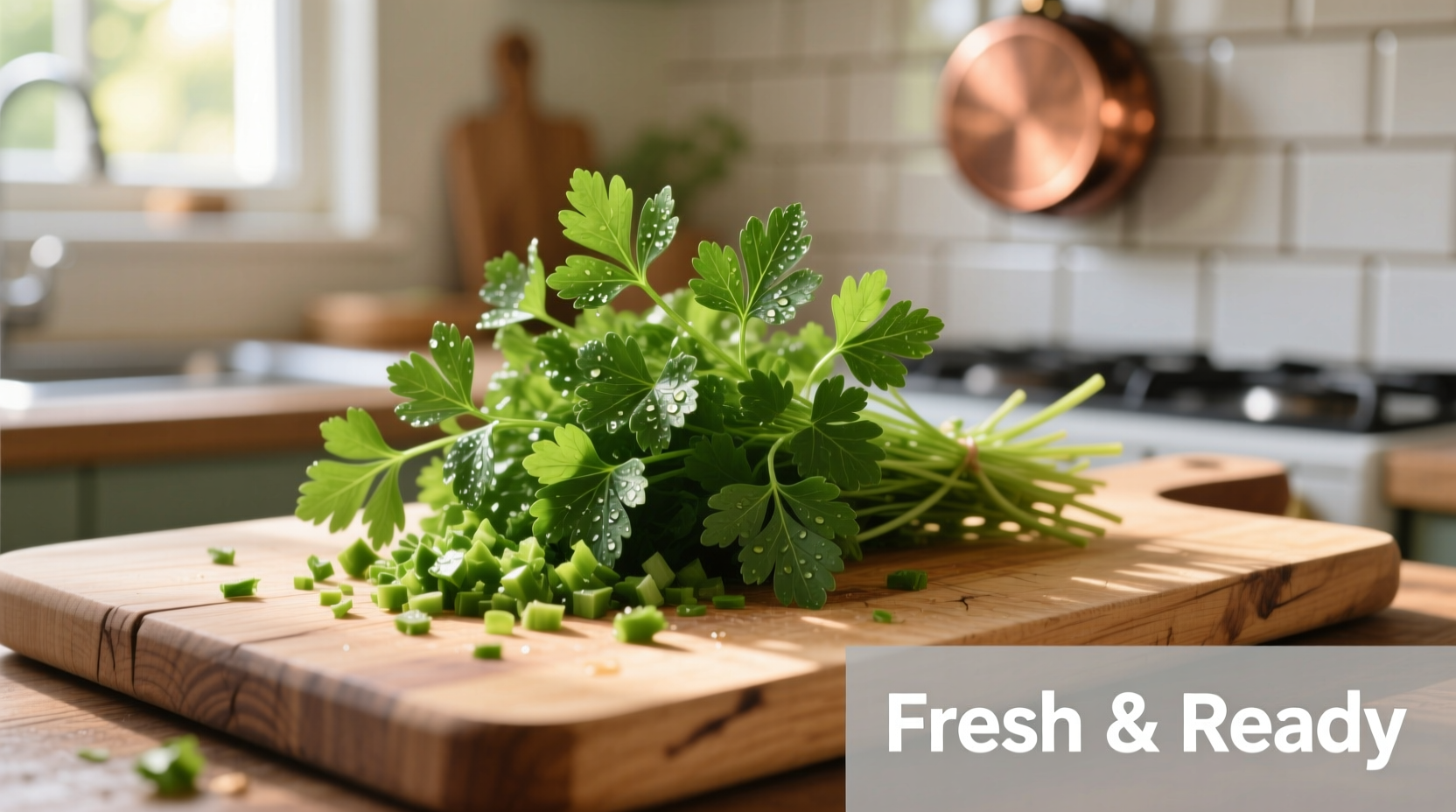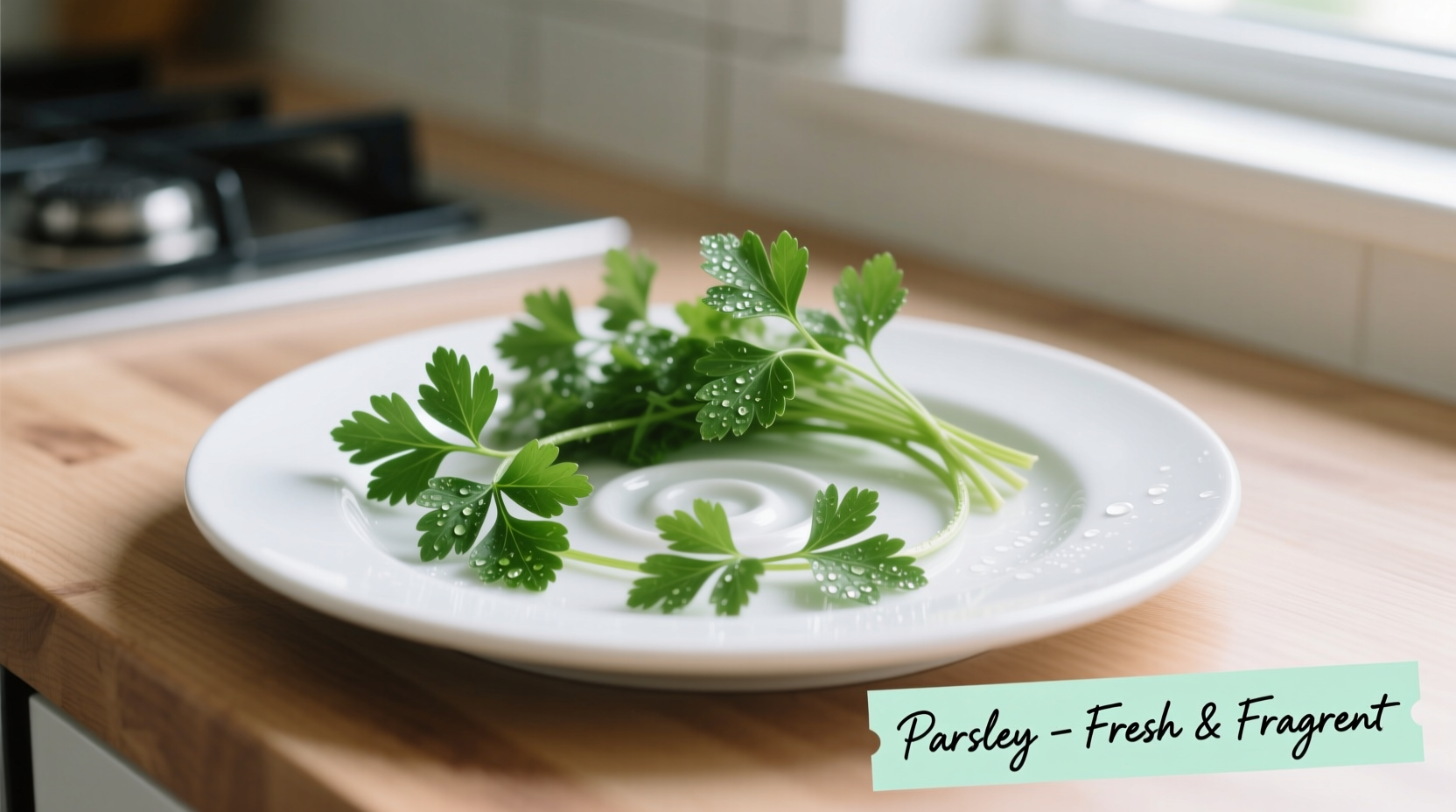If you're searching for what parsley is used for, here's the direct answer: Parsley serves as both a versatile culinary herb and a nutrient-dense superfood. Chefs primarily use it for flavor enhancement in sauces, soups, and salads, while home cooks value it as an attractive garnish. Nutritionally, parsley delivers exceptional amounts of vitamin K, vitamin C, and antioxidants that support bone health, immunity, and inflammation reduction. Unlike many herbs that lose potency when dried, parsley maintains significant nutritional value whether fresh or dried, making it one of the most practical and beneficial herbs in your kitchen.
When you reach for that bunch of parsley at the grocery store, you're accessing one of history's most enduring culinary and medicinal plants. This unassuming herb packs remarkable versatility that extends far beyond its reputation as mere plate decoration. Let's explore how to maximize parsley's potential in your cooking and wellness routine.
Culinary Powerhouse: Beyond the Garnish
Professional chefs consider parsley an essential flavor foundation rather than just a decorative afterthought. Its bright, slightly peppery taste with grassy undertones complements countless dishes without overwhelming them. Unlike stronger herbs like rosemary or thyme, parsley's subtle profile makes it incredibly versatile across global cuisines.
Consider these professional kitchen applications that transform ordinary meals:
- Flavor base for sauces - The classic French "persillade" (chopped parsley and garlic) forms the foundation for béarnaise, chimichurri, and gremolata
- Stock and broth enhancement - Parsley stems add depth to vegetable and meat stocks (discard leaves which can make stocks bitter)
- Seafood pairing - Its clean flavor cuts through rich fish dishes like salmon or cod
- Meat tenderizer - The enzymes in parsley help break down proteins when used in marinades
- Vegetarian protein booster - Adds freshness to bean and lentil dishes that might otherwise taste flat
| Parsley Type | Flavor Profile | Best Culinary Uses | Storage Life |
|---|---|---|---|
| Flat-leaf (Italian) | Bolder, more robust | Cooking applications, sauces, marinades | 10-14 days refrigerated |
| Curly | Milder, more delicate | Garnishes, salads, finishing dishes | 7-10 days refrigerated |
| Japanese ( Mitsuba ) | Celery-like, more intense | Asian cuisine, soups, dressings | 5-7 days refrigerated |
According to the USDA Agricultural Research Service, flat-leaf parsley contains approximately 20% more essential oils than curly varieties, explaining its stronger flavor profile that holds up better during cooking. This scientific distinction matters when selecting parsley for specific culinary applications.
Nutritional Powerhouse Backed by Science
While parsley's culinary uses get the spotlight, its nutritional profile deserves equal attention. A single quarter-cup serving of fresh parsley delivers:
- More than 100% of your daily vitamin K requirement (critical for blood clotting and bone health)
- Nearly 60% of your daily vitamin C needs (a powerful antioxidant)
- Significant amounts of vitamin A, folate, and iron
- Flavonoids like apigenin and luteolin with demonstrated anti-inflammatory properties
Research published in the Journal of Agricultural and Food Chemistry confirms that parsley contains myristicin, a compound showing potential in laboratory studies to inhibit tumor formation. While human studies are limited, the herb's impressive antioxidant capacity makes it a valuable addition to a health-conscious diet.
Unlike many herbs that lose nutritional value when dried, parsley retains significant amounts of its vitamin content even in dried form. The National Institutes of Health notes that dried parsley maintains approximately 70% of its vitamin K content compared to fresh, making it a practical year-round nutritional option.
Historical Journey of Parsley Through Civilizations
Ancient Greece (500 BCE) - Greeks associated parsley with death and victory, using it to crown athletic champions and decorate tombs
Roman Empire (100 CE) - Romans used parsley as a breath freshener and digestive aid after meals
Middle Ages (800-1500 CE) - European monks cultivated parsley in monastery gardens for medicinal purposes
Colonial America (1600s) - Settlers brought parsley to North America, where it became a staple in colonial gardens
Modern Era (1900s-present) - Scientific research validates traditional uses while culinary applications expand globally
This historical timeline, documented by the International Herb Association, shows how parsley evolved from symbolic plant to culinary essential. Understanding this heritage helps appreciate why certain cultural traditions incorporate parsley in specific ways.
Practical Usage Guidelines for Home Cooks
Maximize parsley's potential with these professional techniques:
Selection and Storage
Choose bunches with vibrant green leaves and crisp stems. Avoid yellowing or wilting. For extended freshness, treat parsley like flowers: trim the stems and place in a glass with an inch of water, covering loosely with a plastic bag in the refrigerator. This method, recommended by the University of California Cooperative Extension, can double parsley's shelf life.
Preparation Techniques
Never wash parsley before storage as moisture accelerates spoilage. Wash just before use under cold running water, then dry thoroughly using a salad spinner. For optimal flavor release, chop parsley with a sharp knife rather than tearing, which damages cell structure and causes faster oxidation.
Culinary Timing
Add curly parsley at the very end of cooking for maximum visual impact. Incorporate flat-leaf parsley earlier in the cooking process to allow its stronger flavor to meld with other ingredients. For soups and stews, add parsley stems during simmering but reserve leaves for finishing.

Important Context Boundaries: When Parsley Isn't Appropriate
Despite its versatility, parsley has specific limitations you should understand:
- Kidney conditions - People with kidney disease should moderate parsley intake due to its high potassium content (per National Kidney Foundation guidelines)
- Pregnancy concerns - Large medicinal quantities may stimulate uterine contractions (though culinary amounts are generally considered safe)
- Medication interactions - Vitamin K content may interfere with blood thinners like warfarin
- Flavor dominance - Avoid using parsley with delicate dishes like poached fish where its flavor might overwhelm
These context boundaries, documented by the American Dietetic Association, help ensure safe and appropriate parsley usage for different dietary needs.
Maximizing Your Parsley Experience
Transform your relationship with this humble herb by implementing these professional tips:
- Freeze chopped parsley in olive oil in ice cube trays for ready-to-use cooking portions
- Make parsley pesto by substituting half the basil with parsley for a brighter flavor profile
- Use parsley stems in vegetable broth - they add depth without the potential bitterness of leaves
- Create a parsley-infused vinegar by steeping sprigs in white wine vinegar for two weeks
- Add finely chopped parsley to scrambled eggs just before serving for a flavor and color boost
Remember that parsley's flavor compounds are volatile. For maximum impact, add fresh parsley during the final minute of cooking or as a finishing touch. The herb's essential oils begin dissipating immediately when exposed to heat, which explains why professional chefs always add it at the end.
Conclusion: Elevate Your Cooking with Parsley
Parsley transcends its reputation as a simple garnish to become a culinary workhorse and nutritional powerhouse. By understanding the differences between varieties, respecting its historical context, and applying professional preparation techniques, you can unlock parsley's full potential in your kitchen. Whether you're enhancing a simple salad, building complex sauce layers, or boosting your daily nutrient intake, this versatile herb deserves a permanent place in your culinary repertoire. The next time you're tempted to push that green sprig to the side of your plate, remember the centuries of culinary tradition and nutritional science packed into those delicate leaves.











 浙公网安备
33010002000092号
浙公网安备
33010002000092号 浙B2-20120091-4
浙B2-20120091-4